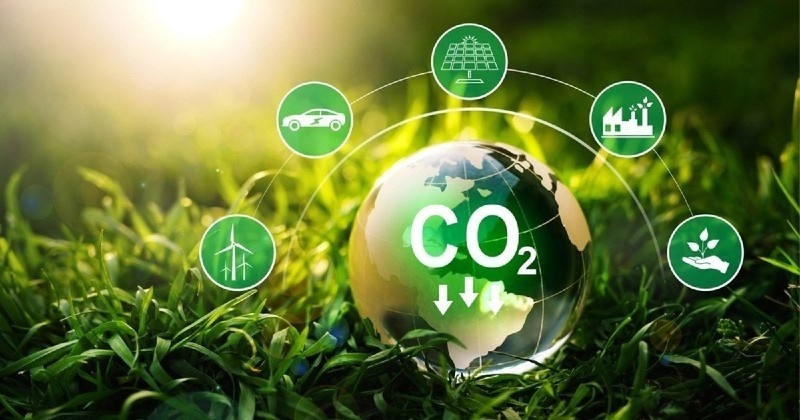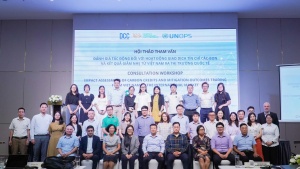 |
This was among the key conclusions of the technical assistance programme ‘Development and Impacts Assessment of Carbon Credit and Allowance Governance Mechanism in Vietnam’. The initiative, running since last September, was carried out by Green Climate Innovation in collaboration with Energy and Environment Consultancy JSC, South Pole Group, and a team of national and international experts.
The study sets out governance options for Vietnam’s ETS pilot phase, covering key issues such as defining coverage, setting the overall cap, allocating allowances to facilities, and using carbon credits for offsetting. Building on these options, nine scenarios were developed and assessed, aligned with the country’s greenhouse gas (GHG) reduction commitments: the unconditional Nationally Determined Contribution (NDC), the conditional NDC with international support, and the combined conditional NDC and Just Energy Transition Partnership (JETP) target.
For each scenario, the study evaluates the impacts on businesses, sectors, and the macroeconomy, both in the absence of an ETS and with an ETS allowing offset use at maximum levels of 10-30 per cent. Without an ETS, enterprises would be obliged to fully invest in GHG mitigation measures to meet NDC targets. With an ETS, businesses could choose the optimal option, including purchasing allowances, purchasing credits, or investing in mitigation measures.
In the unconditional NDC target scenario, total compliance costs fall from $420.5 million without an ETS to $68.9 million with an ETS and a 30 per cent offset limit. Under the conditional NDC target scenario, the costs decrease from $1,297 billion to $879.8 million.
The ETS can mitigate GDP and consumption losses and reduce inflationary pressures. Under the conditional NDC target scenario, an ETS with a 30 per cent offset limit reduces the negative GDP impact by about 0.0124 percentage points, improves the consumption impact by 0.0186 per cent, and lowers consumer price inflation by 0.0049 per cent compared to the no-ETS case during 2025-2030.
Market demand for carbon credits with a 30 per cent offset limit is projected at 56–62 million credits per year, but actual absorption capacity is only 15.8–16.3 million credits per year. In all scenarios, the coal-fired power sector remains the primary purchaser, accounting for 85–90 per cent of total market transactions, equivalent to 13–14.6 million credits.
Carbon credit prices vary significantly depending on the offset limit and the ambition of ETS mitigation targets. In the unconditional NDC target scenario, market prices range from $0.90 – $2.00 per credit, and rise to $3.40 – $3.70 per credit under the conditional NDC scenario.
Overall, scenarios aligned with the conditional NDC and JETP targets deliver the best environmental and social outcomes, though with higher compliance costs, while unconditional NDC-based scenarios are more economically feasible. This highlights the need to balance ambitious mitigation goals, social equity, and economic viability in choosing ETS management options to support Vietnam’s sustainable achievement of GHG reduction targets.
Developing a unified management approach for the ETS and international trading of carbon credits is a key factor to avoid the risk of overselling, ensuring sufficient credits for domestic compliance, and maintain the integrity of the NDC target. To ensure coherence between the ETS and international trading of carbon credits, it is recommended to pursue the following phased, integrated approach.
In the short term (2025–2028), in the initial phase, Vietnam should prioritise market stability and economic considerations. Businesses will be allowed to offset a maximum of 30 per cent of their emission reduction obligations with carbon credits. For international transactions, Vietnam will retain half of the total credits to serve the common goal. This approach creates the necessary flexibility to build market confidence while securing the unconditional NDC targets .
In the medium term (post-2028), once measurement, reporting, and verification systems and market institutions are fully established, offset limits in the ETS should be progressively reduced to 20 per cent while shifting cap-setting to conditional NDC. International trading should maintain at least a 50 per cent retention rate, to ensure consistency between domestic and international markets.
In the long term (from 2030 onwards), the carbon market will move towards full compatibility with Vietnam’s most ambitious climate goals. The offset limit will be reduced to 10 per cent, creating a strong incentive for businesses to reduce emissions directly from their production activities. The retention rate for internationally transferred credits will be reduced to 30 per cent, thereby enhancing environmental ambition and ensuring sufficient credits to meet national targets. Revenue from credit transfers will be strategically reinvested into hard-to-abate GHG sectors and to support a just transition process.
 |
Carbon credits pave way for a green financial future
When observing the global picture, it is clear that carbon credits are gradually evolving into a form of currency, a unique financial derivative that intersects four seemingly unrelated domains: nature, finance, national assets, and knowledge. This intersection creates a market that is both unique and highly challenging. |
 |
The potential ahead for forest carbon credits in Vietnam
Vietnam is considered to have potential to exploit carbon credits from forestry. Carina van Weelden, implementation manager at the German Development Agency, known as GIZ, which is scaling up sustainable forest management and certification in Vietnam, offered VIR’s Kim Oanh in-depth information about the issue. |
 |
Carbon market governance tightened to support global climate action
The government is stepping up efforts to regulate international carbon trading and greenhouse gas reduction exchanges, aiming to strengthen the country’s role in global climate action. |
 |
Vietnam to transfer additional one million carbon credits to World Bank
The Vietnamese government has approved the transfer of one million tonnes of CO₂ emission reductions generated from plantation forests in the north-central region to the International Bank for Reconstruction and Development (IBRD), a member of the World Bank Group. |




